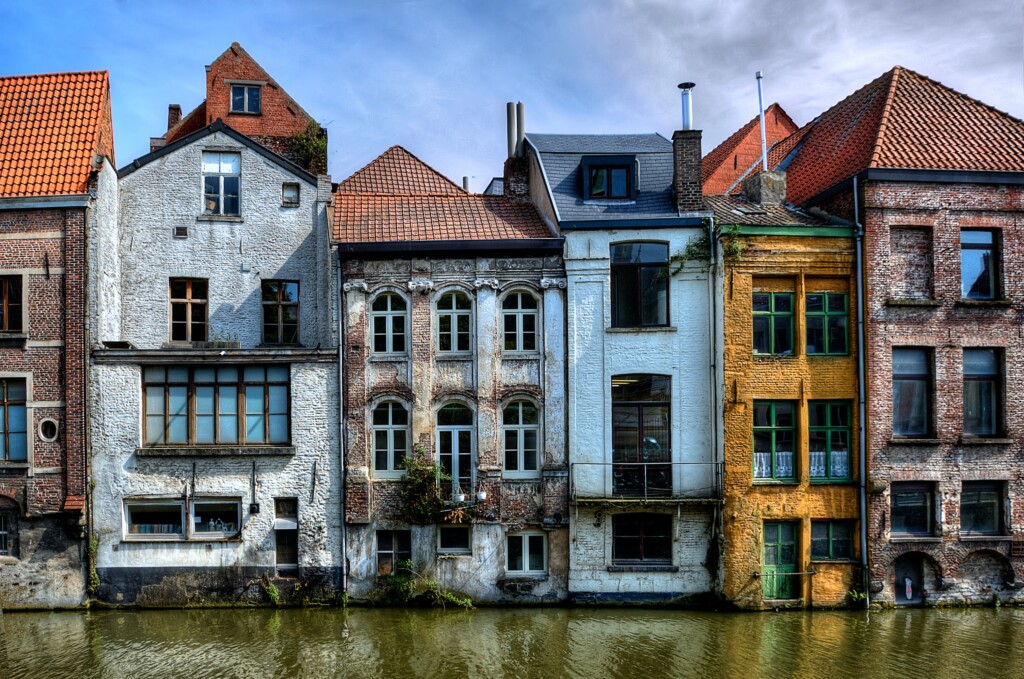Are you fascinated by the idea of creating a healthier and greener planet? With sustainability becoming a genuine priority around the globe, you’ll be amazed at the innovative and impactful initiatives being implemented. From cutting-edge technology to old-fashioned wisdom, different parts of the world are tackling environmental challenges with a range of unique and effective solutions.
Our beloved Earth requires its inhabitants to become its caretakers. The commitment toward better ecological practices illustrates the potential for making bigger changes when the accumulated power of micro-actions is harnessed. Whether it’s a multinational corporation reducing its carbon footprint or a humble local community planting trees, every effort counts.
In the upcoming sections, we’ll journey across continents, exploring remarkable global examples of environmental stewardship. These stories of sustainability, far and wide, aim to not only inform and educate you but also to inspire—with the hope that these positive changes can ripple outward, encouraging more individuals, communities, and businesses to take sustainable action. Ready to uncover what’s being accomplished and how you can contribute to a more sustainable world?
In the end, we will conserve only what we love, we will love only what we understand, and we will understand only what we are taught.
Baba Dioum

In the heart of Arizona, a beacon of hope shines for vulnerable young individuals facing the harsh reality of homelessness. I Am You 360, an innovative nonprofit organization, is at the forefront of offering sustainable housing solutions to these youth, providing much more than just a roof over their heads.
The cornerstone of I Am You 360’s mission lies in its unique approach to housing. They manage a 10-unit building specifically designed for formerly unhoused youth, creating a stable and supportive environment. However, their vision extends beyond conventional structures. In a pioneering move, the organization is developing an eco-friendly village comprising 10 tiny houses. This project isn’t just about housing; it’s a holistic approach to sustainability and community living.
Central to this sustainable village is the incorporation of water-harvesting systems and a flourishing community garden. These features not only provide essential resources but also foster a sense of community and connection to the environment among the residents. The youths are not merely occupants but active participants in maintaining and nurturing these green spaces.
The innovation extends to the construction methods used. Each unit in this eco-village is built with modular blocks, stacked and filled with concrete. This method isn’t just architecturally sound; it significantly enhances energy efficiency compared to traditional timber-framed structures. The design philosophy here is about creating homes that are not just shelters, but sustainable living spaces that are economical to maintain and kind to our planet.
Desiree Cook, the founder and executive director of I Am You 360, emphasizes that sustainability was a key consideration for these tiny homes. The goal is to create lasting, durable housing solutions that can serve generations to come. This project stands as a shining example of how thoughtful, eco-conscious design can provide practical solutions to social issues while also nurturing our environment.
By combining sustainability with social welfare, I Am You 360’s initiative goes beyond mere housing – it’s about building a future. It serves as an inspiring model, demonstrating how environmental sustainability can be seamlessly integrated into solutions for social challenges. This project is a testament to the power of innovative thinking in addressing some of the most pressing issues faced by our communities today.
In Romania, the luxury jeans brand No 44 is charting a new course in sustainable fashion. This denim company has embraced an eco-friendly model that stands in stark contrast to the often wasteful practices of the fashion industry. At the core of No 44’s sustainability drive is a unique denim recycling program, which is reshaping how consumers and the industry view fashion waste.
The world of fashion, especially the fast fashion sector, is notorious for its environmental impact, with large volumes of textiles ending up in landfills every year. Tackling this challenge, No 44 invites customers to send in their old jeans, which are then repurposed to create new, stylish garments. This initiative is a direct counter to the disposable fashion culture, promoting a cycle of reuse that significantly cuts down on waste.
Customers participating in this recycling effort are rewarded with a 20% discount on their next purchase from No 44. This incentive is a smart strategy that not only encourages recycling but also cultivates a more sustainable mindset among consumers. It’s a practical approach that benefits both the environment and the customer.
No 44’s commitment to sustainable fashion is making a tangible difference. By repurposing denim, the company reduces the demand for new raw materials, conserving resources and mitigating environmental damage. Their efforts exemplify a crucial shift in the fashion industry, demonstrating that environmental responsibility and chic design can go hand in hand. As No 44 continues to champion sustainable practices, it offers a compelling blueprint for how the fashion industry can operate with a deeper consciousness of its environmental footprint.
Croke Park in Ireland stands not only as a historic sports stadium but also as a beacon of sustainability in the athletic world. Since 2007, this iconic venue has embarked on an ambitious sustainability journey, transforming it into a model for eco-friendly sports facilities globally.
The strides made by Croke Park in waste management are particularly noteworthy. The stadium has achieved the remarkable feat of diverting all of its waste from landfills since 2014. This zero-waste-to-landfill achievement is coupled with a significant reduction of waste production by 12% over the past ten years. Such accomplishments in waste management are the result of a comprehensive strategy involving recycling, composting, and efficient waste segregation.
Beyond waste management, Croke Park is also deeply invested in biodiversity and community sustainability. The stadium has initiated several programs that intertwine sports with environmental responsibility. This includes installing bird nesting boxes around the stadium to support local wildlife and managing a polytunnel where produce is grown for use within the stadium. The venue’s commitment extends to its surroundings, with compost made from food and grass waste distributed to the local community.
Furthermore, Croke Park has taken a proactive approach in educating and engaging the public about sustainability. Post-holiday recycling programs for items like electronics and Christmas trees encourage community participation in environmental stewardship. These initiatives highlight Croke Park’s role not just as a sports venue but as a community leader in sustainability.
Croke Park’s journey is a testament to how sports venues can play a pivotal role in promoting environmental consciousness. The stadium’s efforts demonstrate that environmental sustainability and sports can coexist harmoniously, setting a benchmark for other venues worldwide.
In the realm of urban and national sustainability, cities and countries around the world are pioneering innovative approaches to create a more sustainable future. From Brazil’s data-driven initiatives to Ghent’s unique environmental projects, these examples showcase the diverse ways in which sustainability is being integrated into urban planning and national policies.
Brazil has taken a groundbreaking step in sustainability by adopting a data-backed approach to monitor the sustainable development of its cities. This involves assessing over 100 indicators that track progress in various aspects of urban life, from environmental impact to social welfare. This method allows for a detailed understanding of each city’s needs and progress, ensuring that sustainable development is not just a concept but a measurable reality. By doing so, Brazil is setting a precedent for other nations in the Global South, proving that data can be a powerful tool in guiding sustainable urban development.
Tokyo, Japan’s bustling capital, has unveiled an ambitious sustainability plan with a sharp focus on renewable energy and waste reduction. The city’s goal is to source about half of its energy from renewable sources by 2030, a significant step for a metropolis of its size. Additionally, Tokyo aims to halve its food waste and phase out gasoline-powered cars by the same year. These targets are not just aspirational; they reflect a comprehensive strategy to transform Tokyo into a sustainable and resilient city, setting a high standard for other global cities.
In East Sussex, England, the city of Brighton & Hove is emerging as a leader in sustainable food initiatives. The city boasts a network of sustainable food projects that feed hundreds daily, addressing food insecurity while promoting sustainable practices. Furthermore, with over 75 allotments, Brighton & Hove encourages residents to grow their own food, fostering a connection with the environment and promoting local, sustainable food production.
Ghent, Belgium, is gaining attention for its creative environmental initiatives. One notable project involves offering canoe rentals in exchange for a bucket of trash collected from the city’s waterways. This initiative not only cleans up the waterways but also engages the community in environmental stewardship. Additionally, Ghent has implemented energy-efficient lighting for its monuments and historic buildings, preserving its cultural heritage while reducing its carbon footprint.
These examples from Brazil, Tokyo, Brighton & Hove, and Ghent illustrate that sustainability is a diverse and dynamic field. Whether through data-driven policies, ambitious renewable energy targets, community food projects, or innovative environmental programs, these urban and national pioneers are leading the way towards a more sustainable world.

Israel’s approach to water management stands as a remarkable success story in the face of arid conditions. At the core of this achievement are two groundbreaking technologies: desalination and drip irrigation, both of which have revolutionized the way Israel addresses water scarcity.
Desalination has been a game-changer for Israel. The country has built some of the world’s most efficient desalination plants, turning the abundant seawater from the Mediterranean into a vital freshwater resource. This has dramatically reduced Israel’s reliance on inconsistent rainfall, ensuring a steady supply of water for its population.
Alongside desalination, Israel’s use of drip irrigation has redefined agricultural practices in dry regions. This technique delivers water directly to the roots of plants in a controlled manner, significantly cutting down water wastage and evaporation. As a result, Israel’s farmers are able to grow crops even in desert areas, maximizing yield with minimal water usage.
These strategies have not only helped Israel sustainably manage its water resources but have also turned it into a model for other countries dealing with water scarcity. By successfully implementing these technologies, Israel demonstrates that effective water management is possible even in the most challenging environments. This approach serves as a beacon of hope and a guide for nations striving to overcome their own water-related challenges.

In South Australia, the installation of one of Tesla’s largest lithium-ion batteries signifies a major advancement in the field of sustainable energy storage. This colossal project, often referred to as the “Big Battery,” represents a pivotal moment in the global shift towards renewable energy sources.
The need for efficient energy storage has grown in tandem with the surge in renewable energy production. Renewable sources like solar and wind are intermittent by nature, and this is where Tesla’s Big Battery comes into play. It acts as a reservoir of energy, storing excess power generated during peak production times and dispatching it when demand surges or production dips. This innovation is crucial in smoothing out the inconsistencies of renewable energy sources, making them more reliable and viable.
One of the most immediate impacts of this project has been on grid stability. Before the Big Battery’s installation, South Australia grappled with frequent power outages and energy supply issues. The battery’s ability to rapidly respond to fluctuations in the grid has dramatically reduced these outages, showcasing its capability as a stabilizing force in the energy network.
Furthermore, the Big Battery serves as a testbed for large-scale energy storage solutions. Its success has not only bolstered confidence in renewable energy but also inspired other regions to consider similar projects. By demonstrating that large-scale energy storage is not only feasible but also highly effective, Tesla’s Big Battery is paving the way for more ambitious renewable energy projects worldwide.
In summary, Tesla’s Big Battery in South Australia is more than just a technological marvel; it’s a template for future energy solutions. Its impact on grid stability and the promotion of renewable energy usage is a beacon for other regions facing similar energy challenges, proving that with the right technology, a sustainable energy future is within reach.
Eco-friendly architecture and urban planning are reshaping cities around the world, turning them into models of sustainability and green living. From the towering green skyscrapers of Singapore to the verdant public spaces of Copenhagen, these developments showcase how urban environments can harmoniously coexist with nature.
Singapore, known for its urban density, has embraced green building designs with open arms. The city’s skyscrapers are not just steel and glass monoliths; many are draped in lush vertical gardens, helping to combat the urban heat island effect. These green skyscrapers go beyond aesthetic appeal, playing a crucial role in air purification and providing green spaces in a densely packed city. Buildings like the Oasia Hotel Downtown are wrapped in a living, breathing green facade, standing as a testament to Singapore’s commitment to green architecture.
Copenhagen, Denmark, is another excellent example of sustainable urban planning. The city is interspersed with extensive green spaces, bike paths, and parks, making sustainability a part of everyday life. Copenhagen’s approach to urban design prioritizes environmental considerations and community well-being. The city’s ambition to become carbon-neutral by 2025 is evident in its infrastructure, from energy-efficient buildings to the proliferation of green spaces that dot the urban landscape.
Moreover, the concept of eco-villages and sustainable living communities is gaining traction. These communities are designed with sustainability at their core, integrating renewable energy, waste reduction, and local food production. They are not just about reducing environmental impact but also about creating a sense of community, where living in harmony with nature goes hand in hand with fostering strong social ties.
These examples from around the world illustrate that eco-friendly architecture and urban planning are not just fleeting trends but integral aspects of building sustainable futures. They prove that with thoughtful design and planning, urban spaces can be transformed into thriving, green, and sustainable environments.
Reading about groundbreaking sustainability projects worldwide might inspire you to ponder what actions you could take to enhance sustainability in your own community. It’s important to remember that even the smallest efforts can grow into significant movements over time. Your initiatives, whether they’re in your neighborhood or extend to your city or country, can inspire others near and far. This ripple effect can amplify your impact and foster a broader culture of environmental stewardship.
Consider what aspects of sustainability truly spark your interest. Perhaps you’re drawn to protecting local wildlife, reducing landfill waste, or promoting urban gardening for fresh, local produce. These are just a few areas where your passion can ignite change. When you’re deeply passionate about your chosen sustainability focus, maintaining a positive outlook and motivating others becomes more effortless.
Moreover, think about how you can incorporate sustainable practices into your daily life. Simple actions like reducing water usage, opting for public transport, or supporting local eco-friendly businesses can collectively make a substantial impact. Engage with community groups or start initiatives that align with your interests, whether it’s a neighborhood recycling program or a community garden project. By taking these steps, you’re not just contributing to a greener world; you’re also setting an example for others to follow, creating a chain reaction of positive environmental action.
Stay a while and read more posts like this
Let’s devote a few minutes to envision our world in 2100. It’s quite a thought experiment, given the dramatic transformations our planet has experienced in...
With climate change looming large, the world is embarking on a quest for solutions to heal our ailing planet. Solar geoengineering emerges as a burgeoning field,...
Taking on parenthood comes with unique choices that factor in more than just our family’s immediate needs. For modern parents, who are not just guardians of...